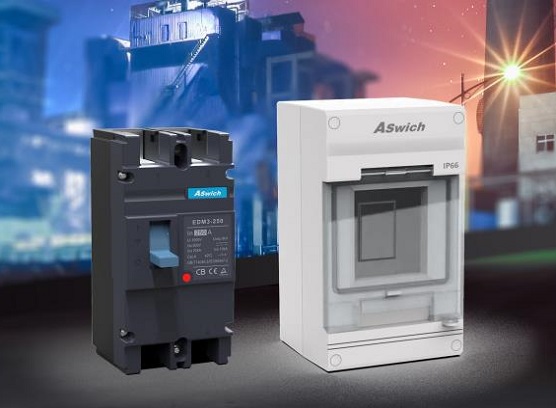A circuit breaker is a power system protection device that can make or break a circuit.
The choice of a range of circuit-breakers is determined by: the electrical characteristics of the installation, the environment, the loads and a need for remote control, together with the type of telecommunications system envisaged.
A circuit breaker operates under fault conditions and isolates the faulty part of the circuit from the rest of it by breaking the circuit. This operation is performed automatically by employing a relay along with the circuit breaker.
It should be noted that circuit breakers may also be manually operated and can also be operated under normal conditions. Hence circuit breakers are also useful switching devices that are used to make or break a circuit in normal conditions.

How to Select the Right Circuit Breaker
There are a few different criteria to consider when selecting a circuit breaker including voltage, frequency, interrupting capacity, continuous current rating, unusual operating conditions and product testing.
Voltage Rating
Circuit Breakers Available in Different Sizes & ConfigurationsThe overall voltage rating is calculated by the highest voltage that can be applied across all end ports, the distribution type and how the circuit breaker is directly integrated into the system. It is important to select a circuit breaker with enough voltage capacity to meet the end application.
Frequency
Circuit breakers up to 600 amps can be applied to frequencies of 50-120 Hz. Higher than 120 Hz frequencies will end up with the breaker having to derate. During higher frequency projects, the eddy currents and iron losses causes greater heating within the thermal trip components thus requiring the breaker to be derated or specifically calibrated. The total quantity of deration depends on the ampere rating, frame size as well as the current frequency. A general rule of thumb is the higher the ampere rating in a specific frame size the greater the derating needed.
All higher rated breakers over 600 amps contain a transformer-heated bimetal and are suitable for 60 Hz AC maximum. For 50 Hz AC minimum applications special calibration is generally available. Solid state trip breakers are pre-calibrated for 50 Hz or 60 Hz applications. If doing a diesel generator project the frequency will either be 50 Hz or 60 Hz. It is best to check ahead of time with an electrical contractor to make sure calibration measures are in place before moving forward with a 50 Hz project.

Maximum Interrupting Capacity
The interrupting rating is generally accepted as the highest amount of fault current the breaker Control Panel Circuit Breakerscan interrupt without causing system failure to itself. Determining the maximum amount of fault current supplied by a system can be calculated at any given time. The one infallible rule that must be followed when applying the correct circuit breaker is that the interrupting capacity of the breaker must be equal or greater than the amount of fault current that can be delivered at the point in the system where the breaker is applied. Failure to apply the correct amount of interrupting capacity will result in damage to the breaker.
Continuous Current Rating
In regards to continuous current rating, molded case circuit breakers are rated in amperes at a specific ambient temperature. This ampere rating is the continuous current the breaker will carry in the ambient temperature where it was calibrated. A general rule of thumb for circuit breaker manufactures is to calibrate their standard breakers at 104° F.
Ampere rating for any standard application depends solely on the type of load and duty cycle. Ampere rating is governed by the National Electrical Code (NEC) and is the primary source for information about load cycles in the electrical contracting industry. For example lighting and feeder circuits usually require a circuit breaker rated in accordance with the conductor current carrying capacity. To find various standard breaker current ratings for different size conductors.
All UL standard molded case circuit breakers undergo extensive product and calibration testing based upon UL Standard 489. UL certified breakers contain factory sealed calibrated systems. The unbroken seal guarantees that the breaker is correctly calibrated and has not been subject to tampering, alteration and that the product will perform accordingly to UL specifications. If the seal is broken the UL guarantee is void as well as any warranties.
